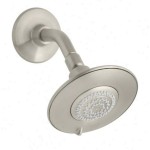How To Remove Black Mould From Silicone Sealant In Shower
Black mould in the shower is a common problem that can be unsightly, unsanitary, and even harmful to your health. Mould thrives in the warm, moist environment of a shower, and silicone sealant is a particularly vulnerable area because it is often porous and easy for mould to penetrate. If you have black mould in your shower, it is important to remove it as soon as possible. Here are some tips on how to do this: 1.Ventilate The Shower:
\- Ensure proper ventilation in your bathroom to reduce moisture levels. Open windows or use an exhaust fan during and after showers to promote airflow. 2.Use Protective Gear:
\- Wear gloves and a face mask to protect yourself from mould spores. 3.Clean The Mould:
\- Mix a solution of equal parts white vinegar and water in a spray bottle. \- Spray the solution onto the mouldy areas and let it sit for 15-20 minutes. \- Scrub the mould with a stiff brush or sponge. \- Rinse the area with clean water and dry it thoroughly. 4.Use Bleach:
\- If the mould is particularly stubborn, you can try using bleach. \- Mix a solution of 1 part bleach to 10 parts water in a spray bottle. \- Spray the solution onto the mouldy areas and let it sit for 30 minutes. \- Scrub the mould with a stiff brush or sponge. \- Rinse the area with clean water and dry it thoroughly. \-Note:
Bleach can be corrosive, so be sure to use it in a well-ventilated area and avoid contact with skin and eyes. 5.Apply A Mould-Resistant Sealant:
\- Once you have removed the mould, apply a mould-resistant sealant to the affected areas. \- This will help to prevent mould from returning. \- Apply the sealant according to the manufacturer's instructions. 6.Clean Regularly:
\- To prevent mould from returning, clean your shower regularly. \- Use a mild detergent and a soft cloth to wipe down the walls, floor, and fixtures. \- Pay particular attention to areas where mould is likely to grow, such as the sealant around the shower door and tub. 7.Control Moisture:
\- Keep the humidity in your bathroom low by using a dehumidifier or by airing out the room after showering. \- Fix any leaks or plumbing issues that may be contributing to excess moisture. 8.Replace The Sealant If Necessary:
\- If the sealant is severely damaged or mouldy, it may need to be replaced. \- Use a sharp utility knife to remove the old sealant. \- Apply new sealant according to the manufacturer's instructions. If you have tried the above methods and are still unable to remove the black mould from your shower, you may need to call a professional mould remediation company. They will be able to assess the situation and recommend the best course of action.How To Clean Black Mold Off Silicone In The Shower All Coast Inspections

How To Remove Black Mould From Silicone Sealant Groom Property Maintenance

How To Clean Black Mold From Shower Silicone Sealant House Cleaning Tips Deep

How To Remove Mold From Shower Caulking Tips Tricks And Secrets

Black Mould Get Rid Of With Bleach And Toilet Roll Express Co

How To Clean Mould Off Bathroom Sealant
How To Clean Black Mold Off Silicone In The Shower All Coast Inspections

How Do I Remove Black Mould From Shower Floor
How To Remove Black Mould From Silicone Sealant And Rejuvenate Your Bathroom

Black Mold In The Shower How To Clean It Kitchen With Matt
Related Posts








